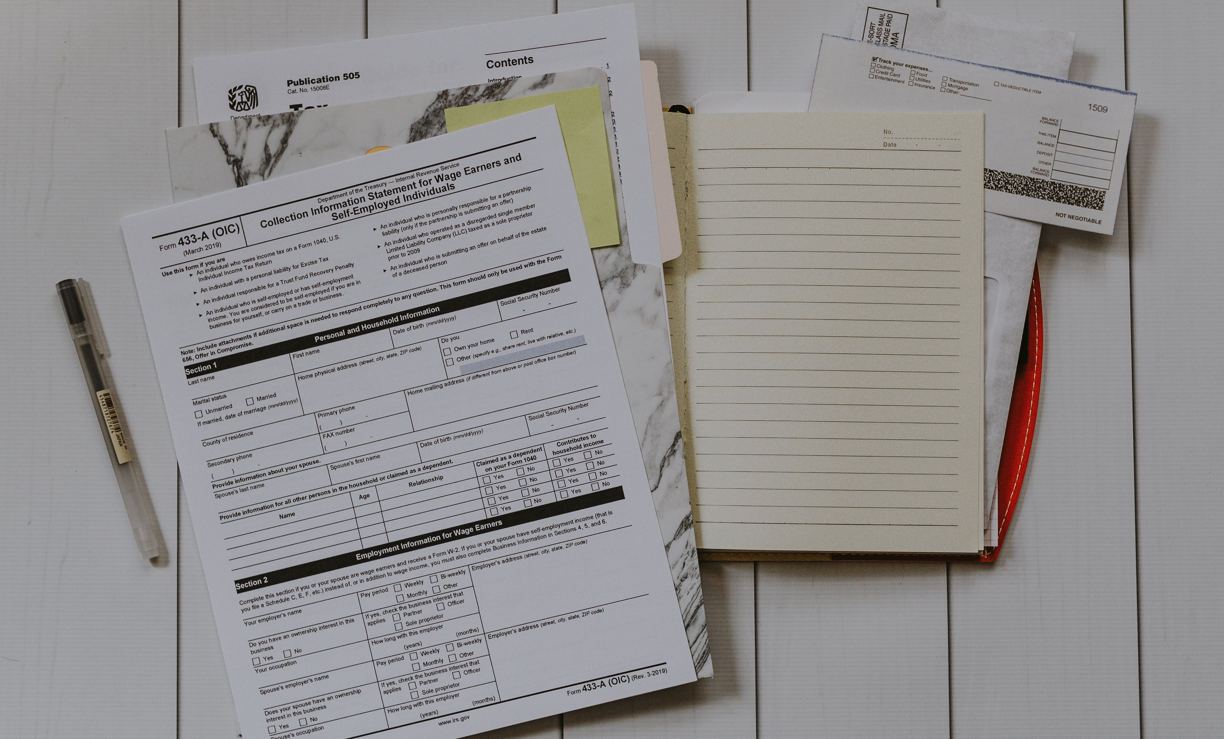The more of your investment income you pay in taxes, the less that income can fund your retirement
By Olev Edur
Photo: iStock/Ivan-balvan.
You’ve struggled for much of your working life, trying to save a bit of money for retirement, and in retirement you have to try to make that investment generate as much income as possible. A corollary goal throughout this whole financial planning process is to keep as much money as possible beyond the unrelenting grasp of the government (as you may have discovered is advisable when you filed your taxes this past spring). Tax planning is really a year-round pursuit and to that end, here are a few post-return suggestions from the experts.
Some basic tax-planning axioms are already well understood. All investors presumably recognize the value of diversification and own both fixed-income interest-generating “safe” investments and “risky” but (over the long term) higher-yielding and more favourably taxed dividends and capital gains. By the same token, most people see the merit in using RRSPs and TFSAs as a tax-assisted means of saving.
The transition to retirement creates new priorities, however, and new tax considerations to go with them.
“When people transition into retirement after they’ve been desperately saving all their working lives, it’s a big shift,” says Shelley Smith, a financial planner with TD Wealth in Toronto. “Most people haven’t thought about how to take that money out. There’s no one right answer for everyone, so it’s important to talk with a financial advisor about what strategies you want to use and in what order you want to take the money out.”
How, for example, do you turn that often uneven growth into a steady income stream that’s better than the meagre two or three per cent you might get now from a GIC? Various options are available, but most advisors we reached spoke favourably of T-class funds as a sound choice.
Tax-Free Return of Capital
“If you’re a retiree who buys mutual funds, T-class funds are one way to minimize taxes outside your RRSP,” says David Truong, a tax expert and financial planner with National Bank Private Banking 1859 in Montreal. “These funds can provide steady income that is treated as a tax-free return of your own capital. The payments reduce the adjusted cost base of the investment and the income is taxed as a capital gain when you sell. There may be a few taxable distributions from time to time, but not very much.”
Wilmot George, the vice-president of tax, retirement, and estate planning at CI Investments in Toronto, concurs: “T-class mutual funds are really designed for retirees. Depending on the fund, it may pay you two, three, five or even eight per cent, usually in 12 monthly instalments, and that income is treated as a return of your own money on which you’ve already paid tax. You receive the cash flow in a very tax-efficient way and you can preserve your Old Age Security [OAS] or Guaranteed Income Supplement [GIS] benefits by keeping your net income down.”
“Investments that provide return of capital distributions can include mutual funds, as well as real estate investment trusts, limited partnerships, and mortgage-backed securities,” says Howard Kabot, the vice-president of financial planning at RBC Wealth Management in Toronto. “These distributions provide three benefits: tax efficiency, predictable monthly cash flow, and a tax deferral. But it’s important to understand that return of capital distributions reduce the cost base of the investment, which can mean a larger capital gain when you sell the investment.”
Deductions for Capital Losses
“Most people don’t like selling investments at a loss,” Smith says, “but remember that those losses can be carried back up to three years to offset capital gains you earned in those years, or they can be carried forward indefinitely to offset capital gains in future.”
John Natale, the assistant vice-president of tax, retirement, and estate planning services at Manulife in Toronto, points out that “capital losses must be first applied against capital gains realized in the same year. If there are excess losses, the best strategy is to carry the losses back to the earliest year in which you have capital gains, before you lose the three-year window. For example, the earliest date allowed to carry back 2018 losses is 2015.”
TFSA and RRSP Strategies
“One of the most common questions among those approaching retirement is how to allocate investments between registered and non-registered accounts,” Smith says. “It’s generally best to put highly taxed assets into registered accounts and lower-taxed assets—those generating dividends or capital gains—into non-registered accounts, because dividends and capitals gains will be fully taxed as normal income when they’re withdrawn from an RRSP.”
As for which is better, TFSAs or RRSPs, Natale says that the choice can depend on the tax rates applicable to your income. “The TFSA can be an ideal savings vehicle if you’re in a low-income tax bracket,” he says. “TFSA withdrawals don’t have an impact on income-tested benefits and credits, such as child tax benefits and credits, OAS, and GIS.”
TFSAs can provide an actual tax reduction, because earnings within the plan will never be taxed (all withdrawals are tax-free), whereas all earnings in an RRSP will be taxed upon withdrawal. Natale suggests high-income earners use both, but consider giving priority to the RRSP if they can contribute while in a high tax bracket and expect to withdraw when in a lower tax bracket, since they can get a high tax deduction for contributions now but pay a low tax rate on withdrawals when they’re retired and their income is lower.
“If your income is high enough, you may choose to maximize both your RRSP and TFSA contributions,” Natale says. “In fact, the tax savings or refund received from the RRSP contribution could be used to fund the TFSA. If you have made RRSP contributions in the past and find yourself in a lower tax bracket, such as when on maternity leave, consider withdrawing from your RRSP to make a TFSA contribution.”
George adds a further thought: “RRSP contribution room is based on earned income, and once people retire, they think they can’t create more room. Many people don’t realize, however, that they may still be earning income that qualifies for RRSP room. For example, if you earn net rental income or are still working part-time or on contract, you may still be creating RRSP room. Don’t automatically assume you can’t contribute.”
RRIF Rollover Considerations
Most retirees understand that they must collapse their RRSPs no later than the end of the calendar year that they turn age 71, typically rolling the proceeds into a RRIF, but is there any tax logic in doing so earlier—even if you don’t need the added income?
“The OAS clawback starts at $74,788 [for 2018] and it reduces your income by 15 per cent of income over that amount,” Smith points out. “The age credit is reduced by 15 cents for each dollar of income above $36,976. If you convert your RRSP to a RRIF before age 71 or take out more than the minimum from your RRIF, it may help you smooth out your yearly income to minimize or avoid clawbacks.
“We tell clients to make sure to look at income levels to decide whether to take out more than the minimum, so that when they hit age 72, they don’t lose out on government benefits,” Smith says. “If you don’t need the money, that’s where the TFSA comes into play: you can put the excess income from your RRIF into the TFSA.”
George notes that it could also be worthwhile to draw down your RRSPs and RRIFs from an estate-planning perspective: “Retirees are typically in the lowest or second-lowest tax bracket, but when you pass on, you’re deemed to have sold all your assets. Unless you can roll them over to a spouse, your estate may face a very high tax rate. If you have $200,000 or $500,000 in registered plans, it all has to be reported as income on your final tax return, so it can make sense to draw down the plans before that. If you don’t need the extra money, you can always reinvest it in a TFSA.
“Another thing—some retirees may be able to make RRSP contributions beyond the age of 71 if they still have contribution room and they have a spouse who is younger than 72,” George says. “You have to close your RRSP by the end of the year you turn 71, but you can contribute to the spousal plan regardless of your age and claim a deduction on your own tax return. And of course, to minimize withdrawals, you can base them on the age of a younger spouse.”
Finally, on RRIF rollovers, Kabot suggests the “forgotten RRSP contribution: If you’re still working in the year you turn 71, you would normally earn contribution room and would normally contribute it to your RRSP the following year. But as we all know, the RRSP must be wound up in the year you turn 71, so what to do? Make next year’s contribution before the RRSP is rolled into the RRIF,” Kabot says. “Do it in December. If you’ve used up all your contribution room for the year, you’ll pay a small overcontribution penalty of one per cent for the month of December, but you’ll be able to deduct the contribution on the following year’s tax return.”
Splitting Your Pensions
For those with a spouse or common-law partner, all our advisors stress the importance of pension splitting to reduce your combined tax load.
CPP benefits can be equally shared and employer pensions can be allocated between you as desired, and, once you’re 65, the same goes for RRIF and LIF payments (and certain annuity income). “One of the most effective strategies for retirees to minimize tax is to take advantage of the pension income-splitting rules,” Kabot says. “These rules allow you to have up to 50 per cent of that income be taxed in the hands of your spouse.”
“Because of income-tested benefits such as age credits, medical expenses, and clawbacks on OAS, the optimal transfer may be less than 50 per cent,” Natale cautions. “Some analysis will be necessary each year to determine the optimal amount to split with your spouse to maximize the tax reduction and minimize the impact on income-tested tax credits and benefits.
“Contributing to a spousal RRSP can also result in tax savings,” Natale adds. “Under the pension income-splitting rules, RRIF, LIF, and annuity income cannot be split before age 65. Spousal RRSPs provide income splitting at any age, and you’re not restricted to 50 per cent. Just watch out for the three-year-attribution rule.” (Withdrawals from a spousal RRSP during the year a contribution is made or in the following two years are attributed back to the contributing spouse, who will have to pay tax on the amount.)
Claim Every Credit
As with pension splitting, all our advisors preach diligence when it comes to claiming the tax credits to which you are entitled, both federally and provincially.
“Make sure you claim all your credits every year,” says Aurèle Courcelles, the vice-president of tax and estate planning at Investors Group in Winnipeg. “There may be quite a few depending on your circumstances, including the age credit and several health-related credits. Inevitably as they get older, retirees begin having physical or mental difficulties, and there are tax credits to help with the associated costs: the caregiver credit, the disability credit, and the medical expenses credit.
“If you receive pension payments other than from government plans such as CPP, those payments qualify for the annual $2,000 pension income credit,” Courcelles adds. “The federal credit is worth $300 and there are provincial equivalents, so it can make sense to move some money into a RRIF early, then withdraw $2,000 annually. If you have a spouse, you can each claim $2,000 and get $4,000 tax-free every year. And because it qualifies as a pension, you can shift it between you for the best tax result.” (The money won’t be entirely tax-free for those in upper tax brackets, Courcelles admits, because the credit is based on the lowest marginal tax rate.)
Family Gifting Without Attribution
“The tax rules allow you to gift assets to adult children [aged 18-plus] without future attribution of earnings back to you, and most provinces have similar rules,” George says. “So if you’re looking to minimize tax within your family and the child has a lower income than you, or if you need to keep your own income down to avoid the OAS clawback, you can give the child some investments.
“You have to be careful, though,” George adds. “First, don’t use these gifts if you might need the money in future, because there is no way of guaranteeing that the kids will be able to give it back. Secondly, you don’t know how the kids will use the money—if they have creditors, for example, or costly habits, you may be better off keeping your assets out of their hands.”






